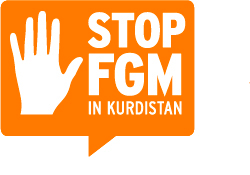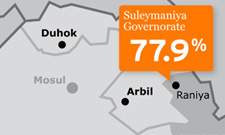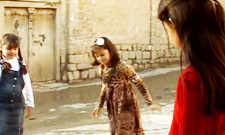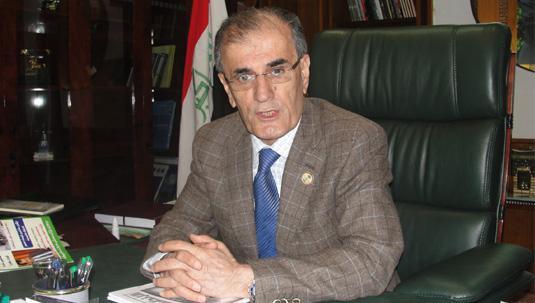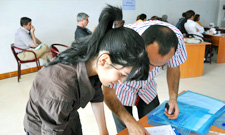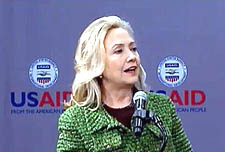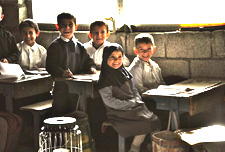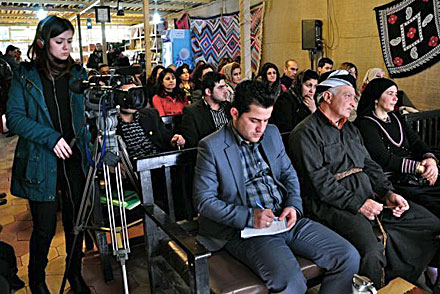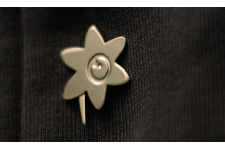Female Genitale Mutilation in Kirkuk – outlook for a campaign
Preliminary data from a study conducted by PANA in cooperation with WADI indicates that 40 % of the women in Kirkuk have been mutilated.
By Falah Muradkhan Shakaram, WADI Project Coordinator in Iraq
(This article was first published in Kurdish in Awene newspaper)
Female Genital Mutilation (FGM) has become one of the main focuses of our work over the last few years. During this period, we have been able to organize the most comprehensive campaign in Iraqi-Kurdistan against this practice and to raise public awareness about the harms and dangers of the practice as well as its consequences. The scale of our activities has been broad and we have been able to make the far-reaching achievement of breaking the taboo of shame and silence attached to FGM, so that nowadays many organizations and governmental bodies as well as the media are working on the issue. This work became more prominent especially after the publication of a Human Rights Watch special report on FGM in June 2010. Consequently, on the 25th of November Dr. Barham Salih, President of the Council of Ministers announced in a public governmental address his opposition to the practice of FGM. On the 11th of December the results of the official study of FGM in Kurdistan, conducted by a group of physicians, were made public. The study involved 5112 women, 41% of whom were circumcised. However, the only scientifically conducted study in the region – a study conducted by our organization and published in 2010 – indicated that from a total of 1408 women in Sulaymaniyah, Hawler and Germyan 72.2% were circumcised; 57% of the women less than 20 years old and 95.7% of the women over the age of 58 were cut.
FGM in other regions of Iraq
During our work on FGM we heard often and from many people that this practice is not an established Kurdish tradition but instead has been adopted from the Arabic “Islamic” traditions. This type of statement and reasoning was always suspicious, although we are convinced that no one in Kurdistan would deny such explanations. However, when the majority of the citizens in other regions of Iraq are faced with the question of the origins of FGM they deny such an association between Islamic traditions and the practice. Although the principal factors that underlie FGM are also present in the other parts of Iraq – namely, religion (the Shafi’ school), patriarchal societal culture and tribal traditions – there is no evidence that the practice of FGM is prominent in these areas. In the light of our experiences from Kurdistan, it may be the case that, rather than not being practiced, FGM in other regions of Iraq is being practiced but still hidden. The taboo of silence has not yet been broken so that the problem could become a publicly discussed issue, as it is being discussed in Kurdistan.
FGM in Kirkuk
FGM is a grave violation of human rights and it is the responsibility of the Central Government to work on prohibiting and preventing it. Clearly the political climate between the central government and the Kurdistan regional government did now allow the allocation of a great deal of attention or responsibility to the issue of FGM. We, therefore, considered it valuable to collect data from other areas of Iraq about FGM, and in the coming years we will make Kirkuk one of the focuses of our activities and sample it as a window to the other parts of Iraq. In doing this we will be following the maxime “Kirkuk is a miniature Iraq”, since it includes all the ethnic groups, religions, cultures and unfortunately all the political complexities and struggles which are tangible in this governorate.
Until now FGM is basically considered a Kurdish problem, therefore The Kurdish Regional Government (KRG) and the Kurdish Parliament were requested to deal with it. But the significant numbers of FGM found in Dyala and Kirkuk are telling another story. Both governorates are not part of the KRG region. Therefore the Central Government in Bagdad and the Iraqi Parliament are responsible to deal with the issue. Thus we are planning to address both the Parliament and the relevant Ministries in Baghdad in order to raise awareness and lobby for a legal ban of FGM throughout the country.
As a preliminary survey to identify the prevalence of FGM in Kirkuk, we formulated a plan – in cooperation with PANA organization, an independent and active organization involved with combating violence against women in Kirkuk – to conduct 36 public meetings for Kirkuki women and young girls, 12 of which will be held in the city centre and 24 in the surrounding cities and villages allocated on the basis of radial distance from the city.
In these meetings we were able to gather 741 women whom were able to question about the issue of FGM. A pilot study was conducted by asking the participants about their personal and family experience of FGM. From a total of 1807 women 738 were mutilated (41%).
From the same study it became clear that the prevalence of FGM among the Sunni Shafi’ Kurds and Arabs was higher than that among the Shiites, and the highest prevalence in an ethnic group was among the Kurds. However, the majority of the participants were citizens from the Kurdish districts and areas, and because of the poor security situation of some majority-Arab areas we were unable to conduct meetings as we would have otherwise wanted to. We hope that in our future programs we are able to involve Arabic and Turkmen organizations in order to complete the survey.
Rahimawa is the most famous Kurdish quarter in Kirkuk and has a remarkably high record of FGM. People in this district still consider FGM as an Islamic Sunna and have markedly little information about the harms of the practice. From a total of 88 women from the quarter, 58 of them were circumcised (65.9%). For the sake of comparison the quarter of “Hey Al-Mutanaza”, an Arab area, was surveyed and from a total of 56 women and girls only 10 were cut (17.8%), and no woman or girl was cut from a total of 43 women living in the Turkmen-quarter of Yayjy Awcheshly. It suggests that among this ethnic minority FGM is not widespread – a very encouraging fact. However, in the city of Dubz, a place where Kurdish, Turkmen and Arabs live, 66% of those questioned were circumcised (33 out of 50 participants).
Clearly, this preliminary study is not without limitations, but it signals that FGM is spread beyond the borders of the Kurdistan region. We hope that through the results of this study we will be able to put pressure on the central government, to take the issue of FGM more seriously. We will designate Kirkuk and other areas of Iraq as the focus of our activities for the coming years in combating FGM, and for this purpose many international organizations have expressed their interest in cooperating with us and are willing to support our activities. The detailed data on the surveyed areas and observed prevalence of FGM is found below.
Data from the study of PANA Centre in Kirkuk:
| # | Area | No. of Partici-pants | Ethnic Origin | No. of female fam.members inc.Particip. | Circumcision | No. of women who prev. heard of bad conseq. | |
Done/Not Done |
|||||||
| 1 | Kurdistan | 18 | Kurdish | 53 | 18 | 35 | 14 |
| 2 | Penja Ali | 22 | Kurdish | 83 | 31 | 52 | 17 |
| 3 | Rahim Awa | 32 | Kurdish | 88 | 56 | 32 | 18 |
| 4 | Hei Almuntezeh | 20 | Arabic | 56 | 10 | 46 | 18 |
| 5 | Muhafeze | 20 | mix Arab,Turkmen | 47 | 1 | 46 | 11 |
| 6 | Newroz | 19 | Kurdish | 59 | 36 | 23 | 19 |
| 7 | Prde/Selahie | 18 | Kurdish | 49 | 18 | 31 | 14 |
| 8 | Prde/Briaty Village | 20 | mix Kurdish,Turkmen | 52 | 20 | 32 | 12 |
| 9 | Prde/Qeli Bashe Village | 18 | Kurdish | 63 | 38 | 25 | 14 |
| 10 | Dibz/ Chkhmaxe Village | 23 | Kurdish | 52 | 25 | 27 | 16 |
| 11 | Dibz/Qirder | 18 | mix Arab,Kurd,Turkmen | 50 | 33 | 17 | 17 |
| 12 | Dibz/Heware Berze | 22 | mix Arab,Kurd,Turkmen | 66 | 20 | 46 | 19 |
| 13 | Laylan/Newroz | 22 | Kurdish | 55 | 11 | 44 | 16 |
| 14 | Laylan/Serjil | 19 | Kurdish | 44 | 12 | 32 | 14 |
| 15 | Serchnar | 25 | Kurdish | 75 | 27 | 48 | 19 |
| 16 | Bagler | 22 | Kurdish | 42 | 15 | 27 | 18 |
| 17 | Kirkuk/Chublige Village | 30 | Kurdish | 74 | 44 | 30 | 19 |
| 18 | Sa7et Omal | 18 | Kurdish | 42 | 15 | 27 | 15 |
| 19 | Tepe | 23 | Arabic,Kurdish | 51 | 12 | 39 | 19 |
| 20 | Qadsie 2 | 24 | mix Arab,Kurd,Turkmen | 42 | 7 | 35 | 13 |
| 21 | Qadsie 1 | 20 | mix Arab,Kurd,Turkmen | 52 | 1 | 51 | 11 |
| 22 | Qerehenjer/Chimani Gew. Vil. | 24 | Kurdish | 49 | 25 | 24 | 17 |
| 23 | Qer./Chimeni Seru Village | 19 | Kurdish | 40 | 20 | 20 | 10 |
| 24 | Qer./Chimeni Shehid Kakil | 17 | Kurdish | 29 | 25 | 4 | 12 |
| 25 | Daquq/Mame Rishe | 20 | mix Kurdish,Arab | 60 | 7 | 53 | 17 |
| 26 | Daquq/Dur Alashair | 17 | mix Kurdish,Arab | 38 | 12 | 26 | 10 |
| 27 | Yaych/Tobzawe | 17 | Kurdish | 38 | 23 | 15 | 7 |
| 28 | Yaychi/Taze | 20 | Kurdish | 27 | 10 | 17 | 4 |
| 29 | Yaychi/ Auchishli | 24 | Turkmen | 43 | 0 | 43 | 11 |
| 30 | Prde/ Esari Gewre | 19 | Kurdish | 42 | 27 | 15 | 12 |
| 31 | Shwan /Ashti | 18 | Kurdish | 44 | 25 | 19 | 15 |
| 32 | Shwan/Bextirai | 20 | Kurdish | 40 | 31 | 9 | 17 |
| 33 | Qerehenjeer/Shex Jibri Seru | 17 | Kurdish | 42 | 16 | 26 | 11 |
| 34 | Qerehenjeer/Shex Jibri Xuaru | 17 | Kurdish | 47 | 28 | 19 | 10 |
| 35 | Qerehenjeer/ Bashblax | 21 | Kurdish | 38 | 24 | 14 | 15 |
| 36 | Qerehenjeer | 18 | Kurdish | 35 | 15 | 20 | 8 |
| Total Numbers | 741 | 1807 | 738 | 1069 | 509 | ||
